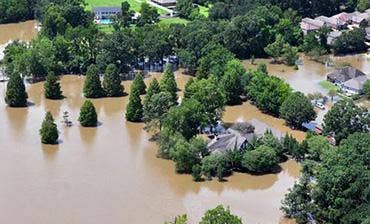Channel Comes To The Rescue As Businesses Struggle To Keep IT Afloat In Baton Rouge Floods

Historic floods in Baton Rouge, La., which have led to at least 11 deaths and widespread destruction this week, are also testing the ability of businesses to protect their IT infrastructures.
Baton Rouge-based solution providers have been scrambling to help customers and non-customers mitigate the impacts of the flooding on their businesses in addition to taking care of their own personnel.
Certain areas around the city have seen water reach homeowners' rooftops, with certain areas to the east and southeast of the city suffering up to 75 percent business losses, said J.P. Villaume, project manager at Gulf South Technology, a Baton Rouge-based solution provider.
[Related: Silicon Valley: One Earthquake Away From IT Disaster?]
"This is the Baton Rouge version of Katrina," Villaume told CRN, referring to Hurricane Katrina, which devastated New Orleans nearly 11 years ago.
Gulf South Technology has started working with affected customers, but it has been a slow start, Villaume said.
"Until [Tuesday] morning, a lot of clients were not even able to get to their infrastructure to see what the situation is. Communications here are down. We aren't able to get in touch with about 30 percent of our customers. There's still some water rescue going on."
For the next week, the focus for many customers will be on how they can get back into their offices and get back into operation, Villaume said.
"We've been doing a lot of remote IT work for clients," he said. "Customers' infrastructures in many are running, but they can't get to them."
Only one customer of Puryear IT suffered from a flooded office, and fortunately it was the smallest of the customer's six offices spread out across Louisiana and Texas, said Dustin Puryear, president and CEO of the Baton Rouge-based solution provider.
However, Puryear told CRN, the biggest issue with nearly all his company's customers is access to their businesses and IT infrastructures. "Some companies have seen their entire staffs gutted," he said.
That includes Puryear IT's own staff, Puryear said. "Some of our people have not fared well," he said. "One of our employees was blocked off by water, and couldn't get out. We offered to put him up in a hotel, but he said he's OK."
Puryear IT on Sunday opened its call center as a command center for anyone in the community, whether a customer or not, to use, Puryear said.
"They can come in and use our office and power as a temporary base, even if they work with a competitor," he said. "Several have taken us up on our offer. We expect the office to get busier as the week goes on."
Puryear IT has also developed a cheat sheet with contact information for emergency rescue information, government contacts, medical information, and even pet shelters to help the community and make it easier for its staff to work with those needing assistance, Puryear said.
"We can also help them dig deeper for help if needed," he said. "A lot of these people are freaking out. And they appreciate it. We're not just helping get their IT up."
Since Katrina, and since 2008's Hurricane Gustav which also hit Louisiana, Puryear IT has moved its own office operations to the cloud, and has set up a VMware clustered environment that customers can use, Puryear said.
"We're a relatively big IT provider here in Baton Rouge," he said. "But we only sold one physical server in the last year. We've been moving customers to hosted environments. When customers ask for servers, we move them to hosted servers. So there's nothing to go down for these customers. Their IT stays online. It's the people that are the main drivers of their IT. That's why we opened up our call center."
About 20 percent of Gulf South Technology's customers already had off-site replication or off-site IT infrastructures in place, and more had been moving to do so, Villaume said.
"Katrina taught us it's important to have educated conversations with customers," he said. "They need to know what they could lose in revenue and other areas in a flood. And they need to know it's not just having off-site backups of data. It's having access to their equipment. But even 10 years after Katrina, there are still a lot of people who are not ready. It all comes down to cost."